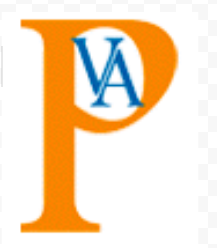How EdTech Innovators Can Learn From Classroom Teachers
Our EdTech posts of past have primarily focused on how educators and schools can focus their curriculum on new education technology innovations to increase student involvement and improvement inside the classroom. A recent article by Jordan Shapiro of Forbes.com flips the perspective.
Shapiro asks EdTech entrepreneurs, “Have you asked the teachers what they want, or what they need?”
There’s a reason the Bill & Melinda Gates Foundation issued a report titled “Teachers Know Best: What They Want From Digital Instructional Tools”. Shapiro’s five key findings are below:
-
“Teachers feel there’s a gap between the variety of tools currently available to them – most of which are purchased by districts on their behalf – and what they find to be most effective in the classroom.”Teachers have been saying this for decades. The nature of school infrastructure is such that teachers are rarely the ones who make the purchasing decisions. Certainly I understand the reasons, but in the age of crowdsourced decision making, you’d hope we could figure out better ways to empower (and trust) teachers to make decisions that were in the best interest of the individuals they work with everyday.
-
“Teachers really do want digital tools” but “those tools need to transform the learning experience in new ways – they can’t simply be ‘converted’ from successful traditional tools.” I know this almost sounds like teachers want disruptive innovations, but that’s not it. Instead, they want edtech that doesn’t try to fix what’s not broken. Stop trying to build better chalkboards; this is not an area where problems exist. Everything doesn’t need to be digitized. But there are some particular areas where teachers do want digital tools…
-
“Teachers identified six instructional purposes for which digital instructional tools are useful: Delivering instruction directly to students; Diagnosing student learning needs; Varying the delivery method of instruction; Tailoring the learning experience to meet individual student needs; Supporting student collaboration and providing interactive experiences; Fostering independent practice of specific skills.” All of these examples point in one direction: collaborative adaptive learning technologies. Everyone knows it. We need technologies that allow us to personalize instruction, assessment, practice, and collaboration in increasingly sophisticated ways. We don’t need technologies that fix the classroom–it works just fine–we need technologies that fix the big problems: individual work, homework, and standardized testing. It is sad to consider our culture’s priorities: we’ve built amazingly sophisticated adaptive algorithms to make consumers incur more and more credit card debt while shopping online but we still haven’t applied the same level of engineering expertise to education.
-
“In math, as grade levels increased, teachers were less likely to report having available, sufficient, and digital resources, with high school math teachers reporting the biggest gaps. The opposite trend is seen in English language arts (ELA), with elementary school teachers reporting the biggest gaps.” Take notes; these are the gaps. And it is not unique to edtech. In general, we’re really good at teaching the building blocks of STEM, but as it gets more ambiguous, we struggle. In ELA, it is the opposite. In my opinion, this is because of our misguided belief that science is factual and the humanities are abstract. In fact, both are language systems–the foundation (or should I say, the grammar) is rigid, the eventual implementation is always creative, fuzzy, and ambiguous. Multi-disciplinary edtech will help everyone understand that the strict divisions between subjects/disciplines is problematic. From what I’ve seen, game based learning is the likely front runner in this area.
-
“Teachers don’t get to choose many of the products their students use, but when they are given the opportunity to select them, they are more likely to report that products were effective.” Remember what really matters. At the end of the school day, it is all about whether or not a teacher is able to reach a student–to nurture a critically thinking, productive contributor to a better civilization. Forget about who signs the checks, and who the customer is, and the size of the market. Focus on the teachers’ relationship with their students. Establish ways to empower them to make their own decisions.

Recent Comments